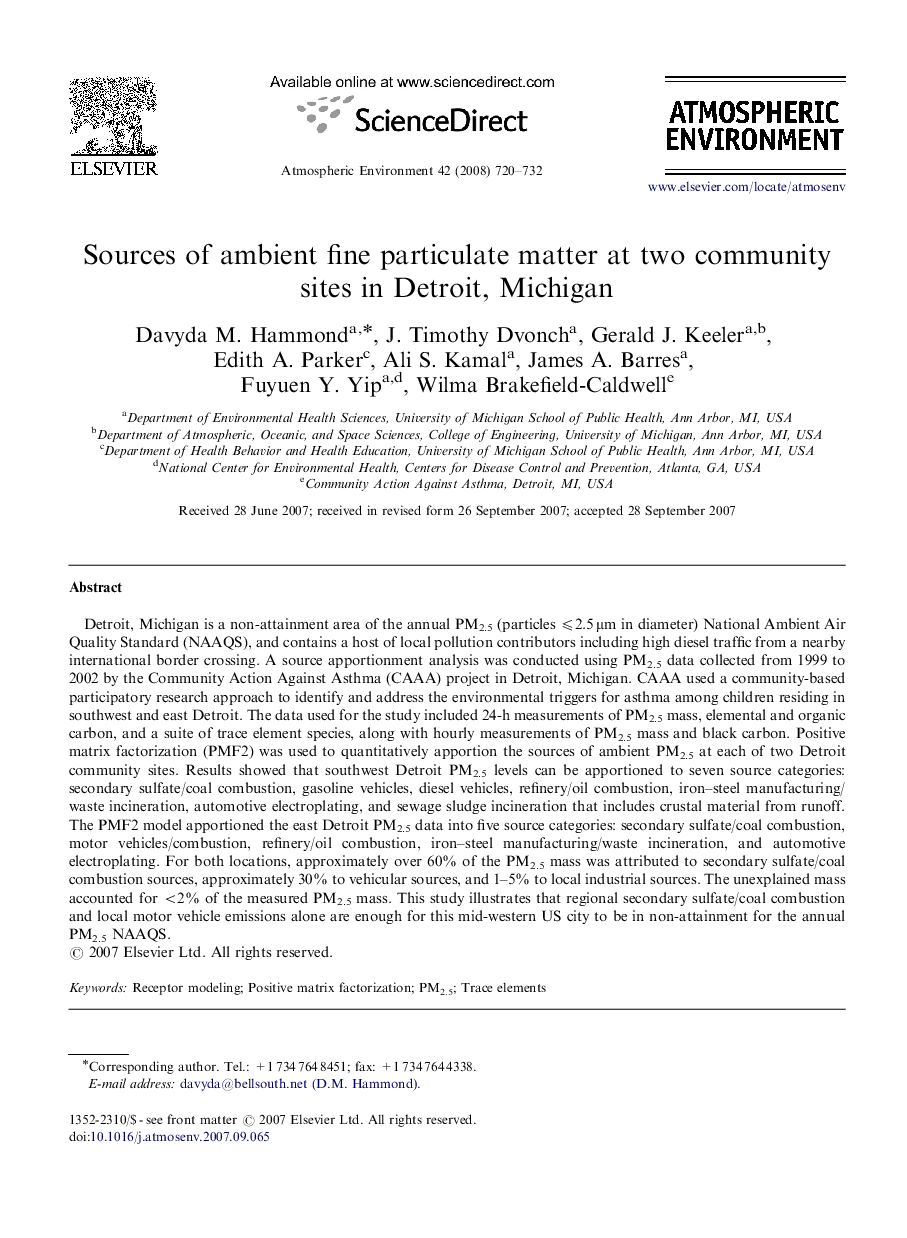| کد مقاله | کد نشریه | سال انتشار | مقاله انگلیسی | نسخه تمام متن |
|---|---|---|---|---|
| 4442620 | 1311159 | 2008 | 13 صفحه PDF | دانلود رایگان |

Detroit, Michigan is a non-attainment area of the annual PM2.5 (particles ⩽2.5 μm in diameter) National Ambient Air Quality Standard (NAAQS), and contains a host of local pollution contributors including high diesel traffic from a nearby international border crossing. A source apportionment analysis was conducted using PM2.5 data collected from 1999 to 2002 by the Community Action Against Asthma (CAAA) project in Detroit, Michigan. CAAA used a community-based participatory research approach to identify and address the environmental triggers for asthma among children residing in southwest and east Detroit. The data used for the study included 24-h measurements of PM2.5 mass, elemental and organic carbon, and a suite of trace element species, along with hourly measurements of PM2.5 mass and black carbon. Positive matrix factorization (PMF2) was used to quantitatively apportion the sources of ambient PM2.5 at each of two Detroit community sites. Results showed that southwest Detroit PM2.5 levels can be apportioned to seven source categories: secondary sulfate/coal combustion, gasoline vehicles, diesel vehicles, refinery/oil combustion, iron–steel manufacturing/waste incineration, automotive electroplating, and sewage sludge incineration that includes crustal material from runoff. The PMF2 model apportioned the east Detroit PM2.5 data into five source categories: secondary sulfate/coal combustion, motor vehicles/combustion, refinery/oil combustion, iron–steel manufacturing/waste incineration, and automotive electroplating. For both locations, approximately over 60% of the PM2.5 mass was attributed to secondary sulfate/coal combustion sources, approximately 30% to vehicular sources, and 1–5% to local industrial sources. The unexplained mass accounted for <2% of the measured PM2.5 mass. This study illustrates that regional secondary sulfate/coal combustion and local motor vehicle emissions alone are enough for this mid-western US city to be in non-attainment for the annual PM2.5 NAAQS.
Journal: Atmospheric Environment - Volume 42, Issue 4, February 2008, Pages 720–732